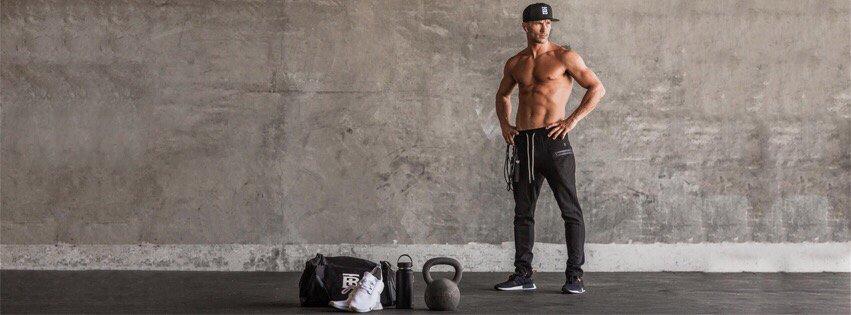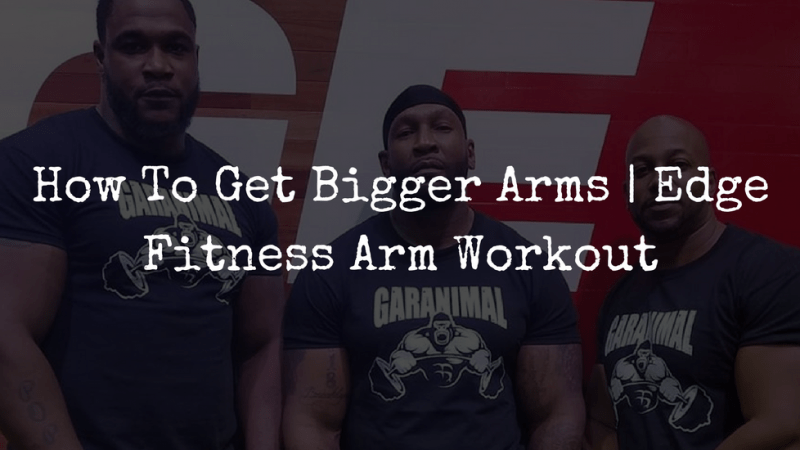There are scores of workout and fitness attire merchants out there. You could probably name a number of them right off the top of your head. Some of these manufacturers and designers make workout clothing that is, frankly, not making the cut. Or its too expensive and restrictive to really make purchasing it worthwhile.
But if you’re looking for a new style for the gym that looks sharp without weighing you down or getting in the way of your movement, then you should check out Born Tough.

About Born Tough
Born Tough (BT) is a new brand. A new style. These are people who are making clothing for the modern day warrior, from the recreational runners to the elite athletes. As long as you want functional clothing for your functional fitness, then you are ready to make a switch to clothing that accelerates your training instead of holding you back.
This brand is going to be direct competition for other brands like GymShark and VQFit.
Born Tough makes minimalist exercise gear that tackles the old-age concept that sportswear should be baggy, disproportional or, on the other hand, clingy and uncomfortable. The clothing is designed for all body types and fits like a second skin. This allows both men and women to bend, twist, dance, jump, and run without needing to think about how they look. Born Tough clothing is stylish yet subdued, so you look ready for the gym, coffee, lounging, or travel all the time.
What makes Born Tough clothing a clear competitor in today’s market, however, is not just the look and feel. The designers have paid extreme attention to the details, including the need for technology. A lot of exercise clothing continues to ignore pockets deep enough for cell phones and mp3 players, headphone wires, and the like. Born Tough clothing integrates these features into their designs, so you can keep your important tech close without getting literally wrapped up in it.
A Look At Born Tough Products
Born Tough is just getting started, but they have already accumulated an array of merchandise for men and women that can fill your wardrobe.
I checked out the Born Tough Core Fit Short Sleeve, made with BT’s signature “Swift fabric,” which makes it lightweight and breathable for intense workouts in the gym. I tried it on and the fit is perfect. There’s nothing I would change about the construction, styling, or sizing. The shirt has an overlay, so it looks seamless. Additionally, the extended scallop hem prevents any embarrassing bunches or riding up from happening as you do your squats and other lower body exercises. Twists and turns couldn’t make this shirt ride up either.
Here’s a glimpse at the features of the Core Fit t-shirt:
- True to size
- 93% cotton and 7% modal spandex
- Flatlock seams
- Extended scallop hem
- 3M reflective logo on the back
- Ideal for a base layer
- Stretchable, breathable, and lightweight
- Minimalist design
- 30-day money back guarantee on all products
Presently, there’s more for men than for women. Men can look at a number of tops, bottoms, sleepwear, hoodies, and sweatshirts. Women have hoodies and sweatpants that come as a track set or separately. The inventory is growing, though, so there is bound to be more options for women in the future.
You can also get free shipping and free returns, too.
Final Thoughts
New brands who try to reshape the face of the fitness apparel industry always bring some excitement to the table, but Born Tough is already making a statement. The quality of the gear, the decent price, and the attention to detail are three things that make these products a smart purchase.
You don’t want miss what this company has in store.
Looking for more info and tips on fitness apparel? Then head over to my YouTube channel and hit the subscribe button. There’s plenty of videos for you to get and stay informed about what’s new in fitness.
You Might also like
-
How To Get Bigger Arms | Edge Fitness Arm Workout
Hey everyone! In this video it was arm day. For this workout video we decided to meet over at Edge Fitness in Deptford, NJ. As many of you know, we love to superset our workouts, especially our arm workouts. This means every time we complete a set of bicep exercises, we perform a complementary triceps exercise. It’s the best way to get the blood flowing! You can perform this workout by yourself, but it’s a tougher workout when you have partners. Pushing to the limit, less time between sets.
Don’t get hung up on the amount of weight. Feel free to reduce the weight and keep the reps high.
How To Get Bigger Arms Workout
-
Easy curl bar (20 Reps) Superset with 4 sets of Skull crushers (20 Reps)4 Sets
Try to perform these with as little rest as possible between sets. -
Incline curls4 Sets
10 to 15 Reps -
Overhead triceps extensions4 Sets
15 to 20 Reps -
Dumbbell curls high reps (30 Reps)4 Sets
10 Regular Curls, 10 Hammer Curls, 10 Cross Curls -
Triceps press-downs high reps4 Sets
20 Reps Minimum -
Triceps rope pulls4 Sets
20 Rep minimum -
Dumbbell preacher curls4 Sets
10 to 15 Reps
Have you tried this workout? I’d like to hear from you. Make sure you like, comment, and most importantly Subscibe! Click the button below.
-
-
Transforming Your Health Passion Into Impactful Initiatives
In a landscape where health is of paramount importance, the impulse to channel your fervor for health and well-being into something meaningful should not be underestimated. RunThaCity delves into diverse ways to transform your enthusiasm into impactful initiatives. From the altruistic undertakings of volunteering to the entrepreneurial aspirations of starting a health-focused business, multiple paths can lead to noteworthy contributions to public health.Volunteer Your Services
Volunteering serves as an effective channel for converting your health-related enthusiasm into palpable change. Opportunities abound in this sector, from offering your skills in local healthcare facilities to participating in outreach programs within the community. The act of volunteering not only offers tangible support to healthcare operations but also presents a window into the transformative power of your passion as you witness first-hand the positive effect it can have on individual lives.Find a Job in the Field
In the quest to find a job that supports people’s health, it’s essential to present yourself as the ideal candidate who can make a positive impact in the healthcare industry or wellness sector. Before seeking such a meaningful position, ensure your first impression is impactful by creating a stellar and professional-looking resume online. Utilizing a free online resume template allows you to select from a library of professionally designed templates, tailored to reflect the compassion and professionalism required in health-supportive roles. These templates provide a foundation upon which you can add your own personal touch—inserting copy, photos, colors, and images that represent your commitment to enhancing people’s health. Crafting your resume online with these customizable options ensures you stand out as a dedicated professional ready to contribute to the wellbeing of others.Become a Health Entrepreneur
Taking an entrepreneurial approach can be a fulfilling way to marry your passion with business. Launching a business in this field isn’t just a passionate endeavor — it necessitates a strategic mindset. Vital elements include devising an insightful business plan and performing comprehensive market analysis, all aimed at ensuring the long-term success and societal impact of your venture.Share Your Health Knowledge
The currency of knowledge is especially valuable in the health sector. Employ various platforms to disseminate essential information, whether through digital avenues such as blogs and social media or more traditional methods like workshops and public talks. The sharing of credible information supports societal well-being, elevating the public’s understanding of health matters and influencing their decisions in a positive manner.Pursue Healthcare Careers
Choosing a formal career in healthcare or wellness opens doors to not only fulfilling personal ambitions but also making a lasting, positive impact on society. Whether one is a nurse attending to patients’ immediate needs, a chef guiding people towards healthier living, a therapist helping individuals manage emotional or physical challenges or a public health professional designing programs for community well-being, each role serves as a touchstone for lasting change. What sets these careers apart is the ability to offer meaningful improvement in the health and lives of individuals and communities, thereby fulfilling both professional and altruistic goals.Fundraise for Health Causes
Financial resources are a cornerstone for many health-related programs and research initiatives. Efforts to raise these funds can range from organizing charity events and community drives to launching crowdfunding campaigns. Through fundraising, you have the potential to accelerate research, facilitate healthcare delivery, and support medical interventions, leaving an indelible imprint on health-related endeavors.Become a Health Advocate
Policy advocacy holds the power to enact sweeping changes that can affect millions. Utilize your enthusiasm for health to campaign for transformative policies that address healthcare accessibility, preventive health measures, and social disparities in healthcare. Align yourself with organizations dedicated to these causes, and use your influence to sway public opinion and legislative decisions. Channeling your enthusiasm for health into meaningful contributions is not only commendable but also impactful. Through varied paths — whether volunteering, initiating a business, sharing valuable knowledge, etc. — you contribute to a tapestry of improved health and well-being for the community and society at large. Each of these avenues offers unique rewards and challenges but holds in common the potential for significant, enduring impact. Through these endeavors, you help shape a world that is not only healthier but also more aware and proactive in its approach to well-being. At RunThaCity, we believe that fitness and sportbikes are not just hobbies, but a way of life. Visit our website to learn more about both today!SelfCaring.info
Brad, is a guest contributor for RunThaCity.com. He is passionate about empowering individuals to reach their full potential through self-care.
Brad's expertise stems from his personal journey and a genuine desire to help people flourish. He now shares his insights through [link to selfcaring.info, if available] and various guest posting opportunities.
-
How Riding a Sportbike Can Boost Your Cardiovascular Health
Riding a sportbike is not just an exhilarating experience; it’s also an excellent way to boost your cardiovascular health. The thrill of speeding down the highway with the wind against your face can significantly benefit your heart and muscles, making it a unique blend of adventure and health.
Key Takeaways Table:
Benefit Description Enhances Cardiovascular Fitness Riding a sportbike increases heart rate, improving cardiovascular health over time. Improves Muscle Endurance Constant control and maneuvering of the bike enhance muscle strength and endurance, particularly in the core and legs. Reduces Stress Levels The focus required while riding can serve as a form of moving meditation, reducing stress levels which is beneficial for heart health. Encourages a Healthy Lifestyle Engaging in sportbike riding motivates individuals to maintain an overall healthier lifestyle, contributing to cardiovascular health. The Heart-Pumping Benefits of Sportbike Riding
Riding a sportbike isn’t just about the thrill and freedom it offers; it’s also a remarkable way to boost your cardiovascular health. This two-wheeled adventure combines aerobic exercise with outdoor exposure, offering a multitude of health benefits, especially for your heart. In 2024, the trend towards incorporating enjoyable physical activities into one’s lifestyle for health benefits has seen a significant uptick, and sportbike riding is riding this wave with gusto.
A Cardiovascular Workout on Two Wheels
At its core, sportbike riding is an excellent cardiovascular workout. Navigating a sportbike requires constant body movement, from balancing to turning and even maintaining posture. This continuous physical engagement increases your heart rate, which in turn, pumps more blood and oxygen throughout your body. The result is a stronger heart muscle and a reduced risk of cardiovascular diseases, a point emphasized in the fitness-focused sections of the RunTheCity Fitness Blog.
Weight Management Through Exhilaration
Sportbike riding is an effective way to manage or lose weight. The combination of adrenaline, enjoyment, and physical activity ensures that you burn calories without the monotony of traditional workouts. Burning calories is crucial for weight management and reducing the strain on your heart, thereby contributing to overall cardiovascular health.
The Road to Lower Blood Pressure
Regular engagement in sportbike riding can lead to lower blood pressure and improved blood flow. The physical activity involved helps widen your blood vessels, enhancing blood flow and reducing the risk of heart disease and stroke. It’s an exhilarating way to combat hypertension, a silent killer that affects millions worldwide.
Breathe Easy, Ride Hard
The outdoor nature of sportbike riding means you’re not just working out your heart but also your lungs. Fresh air and increased oxygen intake can improve lung capacity and efficiency, ensuring that your body’s cells are well-oxygenated, which is essential for overall health and endurance.
Riding Away from Stress
Sportbike riding offers an escape from the daily grind, reducing stress and anxiety levels. The focus required to ride, combined with the enjoyment it brings, can lower cortisol levels, a stress hormone, thereby indirectly benefiting your cardiovascular health by reducing the risk of stress-induced heart problems.
Enhancing Mental Health and Cardiovascular Wellbeing
The psychological benefits of riding a sportbike extend directly to cardiovascular health. The sense of freedom, the rush of adrenaline, and the mental focus required to navigate different terrains can significantly reduce psychological stress and anxiety. Lower stress levels contribute to lower blood pressure and a reduced heart rate, underlining the connection between mental health and physical well-being. The RunTheCity Fitness Blog highlights the importance of integrating activities you love, like sportbike riding, into your routine for lasting health benefits.
Strategies for Maximizing Cardiovascular Benefits
- Consistent Riding Schedule: To reap the cardiovascular benefits, consistency is key. Aim for regular rides, integrating them into your weekly routine to ensure continuous improvement in heart and lung fitness.
- Vary Your Riding Intensity: Just like any workout, varying your riding intensity can help improve cardiovascular health more effectively. Incorporate intervals of high-intensity riding followed by periods of moderate pace to challenge your heart and lungs.
- Hydration and Nutrition: Proper hydration and nutrition play a crucial role in maximizing the benefits of sportbike riding. Staying hydrated and consuming a balanced diet rich in heart-healthy foods will fuel your rides and aid in recovery.
- Cross-Training: Complement sportbike riding with other forms of exercise such as strength training or yoga. This holistic approach to fitness can help prevent injuries and enhance your riding performance and cardiovascular health.
The Community Aspect of Riding
Sportbike riding often brings together individuals with a shared passion, creating a sense of community and belonging. This social interaction can further enhance the mental health benefits of riding, contributing to a happier, stress-free life. Engaging with fellow riders through organized rides or online forums like those featured on RunTheCity can provide motivation, advice, and friendship, all of which are beneficial for mental and cardiovascular health.
Embracing Technology for Health
In 2024, the integration of technology in sportbike riding, through fitness trackers and mobile apps, offers riders detailed insights into their health metrics and progress. These tools can track heart rate, calories burned, and distance covered, providing valuable feedback that can motivate riders to set and achieve their fitness goals, further enhancing cardiovascular health.
Supplements for Cardiovascular Health
To further support cardiovascular health, consider incorporating supplements into your routine. Based on the latest trends and recommendations from health experts in 2024, the following supplements are considered beneficial:
- Omega-3 Fatty Acids: Found in fish oil, these are known for increasing HDL (good) cholesterol and decreasing LDL (bad) cholesterol and triglycerides.
- Magnesium: Regulates blood pressure and heart rate, supporting overall heart function.
- Coenzyme Q10 (CoQ10): Enhances the heart’s pumping ability and may decrease the effectiveness of blood-thinning medication.
- Vitamin B-12 and Folic Acid: Both are essential for preventing the formation of homocysteine, an amino acid that can damage artery linings.
- Plant-Based Supplements: The rise of plant-based diets has led to an increased interest in supplements derived from plant sources, which provide essential nutrients while aligning with ethical and environmental values.
FAQs About Sportbike Riding and Cardiovascular Health
-
Can sportbike riding really improve my heart health?
- Yes, sportbike riding increases your heart rate, similar to any aerobic exercise, helping to improve cardiovascular fitness.
-
How often should I ride my sportbike for health benefits?
- Aim for at least 150 minutes of moderate-intensity activity per week, as recommended by health organizations.
-
Is sportbike riding better than walking or running for cardiovascular health?
- Sportbike riding offers unique benefits, such as reduced joint impact, but walking and running are also excellent for cardiovascular health. The best exercise is one you enjoy and can perform regularly.
-
Can sportbike riding help with weight loss?
- Yes, it can contribute to calorie burn and weight management, especially when combined with a healthy diet.
-
Are there any risks associated with sportbike riding?
- Like any physical activity, there’s a risk of injury, but wearing appropriate gear and riding safely can minimize risks.
-
How does sportbike riding reduce stress?
- The focus required and the enjoyment of riding can lower stress levels, improving overall cardiovascular health.
Conclusion
Riding a sportbike is more than just an exhilarating hobby; it’s a comprehensive activity that benefits your cardiovascular health in numerous ways. From improving heart and lung function to reducing stress and fostering a sense of community, the benefits are wide-ranging. By adopting a strategic approach to riding, prioritizing safety, and embracing the joy it brings, individuals can significantly boost their cardiovascular health while enjoying the ride of their life.










